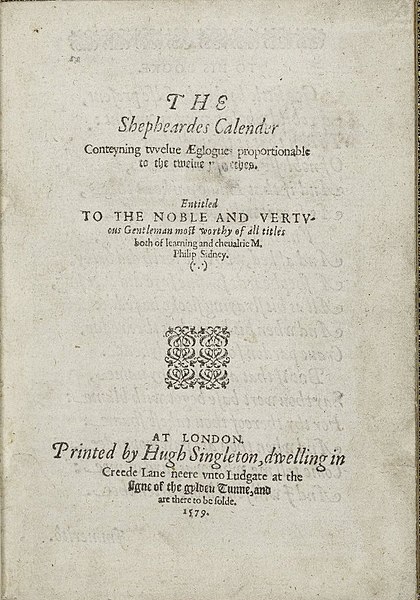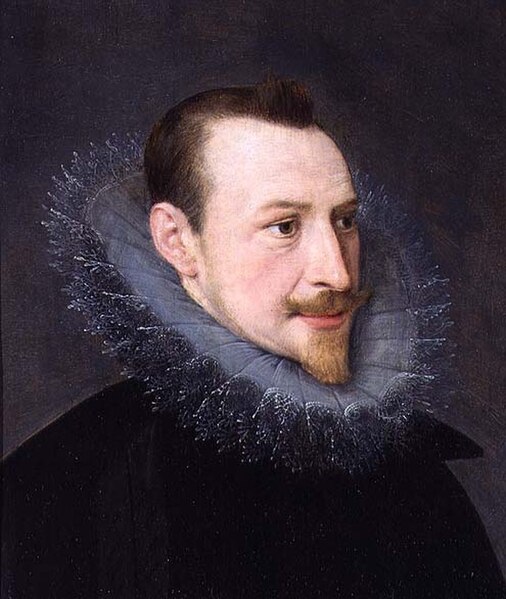The Shepheardes Calender was Edmund Spenser's first major poetic work, published in 1579. In emulation of Virgil's first work, the Eclogues, Spenser wrote this series of pastorals at the commencement of his career. However, Spenser's models were rather the Renaissance eclogues of Mantuanus. The title, like the entire work, is written using deliberately archaic spellings, in order to suggest a connection to medieval literature, and to Geoffrey Chaucer in particular. Spenser dedicated the poem to Philip Sidney.
The poem introduces Colin Clout, a folk character originated by John Skelton, and depicts his life as a shepherd through the twelve months of the year. The Calender encompasses considerable formal innovations, anticipating the even more virtuosic Countess of Pembroke's Arcadia, the classic pastoral romance by Sir Philip Sidney, with whom Spenser was acquainted. It is also remarkable for the extensive commentary or gloss included with the work in its first publication, ascribed to an "E.K." E.K. is an intelligent, very subtle, sometimes wrong, and often deeply ironic commentator, who is sometimes assumed to be an alias of Spenser himself. The term sarcasm (Sarcasmus) is first recorded in English in Spenser's poem (October).

Title page of The Shepheardes Calendar, circa 1571.
The first page of the Aprill Eclogue
Edmund Spenser was an English poet best known for The Faerie Queene, an epic poem and fantastical allegory celebrating the Tudor dynasty and Elizabeth I. He is recognized as one of the premier craftsmen of nascent Modern English verse, and he is considered one of the great poets in the English language.
Edmund Spenser
Title page, Fowre Hymnes, by Edmund Spenser, published by William Ponsonby, London, 1596
Title Page of a 1617 Edition of The Shepheardes Calender printed by Matthew Lownes, often bound with the complete works printed in 1611 or 1617.
The epic poem The Faerie Queene frontispiece, printed by William Ponsonby in 1590.






